The Territory
Forca d’Acero is a mountain pass located at 1,538 meters above sea level, on the border between Lazio and Abruzzo, within the Abruzzo, Lazio and Molise National Park. This pass connects the municipalities of Opi and San Donato Val di Comino and is renowned for its extraordinary biodiversity and the breathtaking views it offers visitors.
Historically, Forca d’Acero marked the border between the Papal States and the Kingdom of Naples. This pass has represented for centuries a strategic crossing point and a meeting place between different cultures.
After the unification of Italy, between 1860 and 1870, the area of Forca d’Acero was the scene of brigandage. Groups of brigands, including the band led by Francesco Cedrone, operated in these mountainous areas, using caves and forests as natural shelters. These groups opposed the new Italian government, often with the support of local populations, dissatisfied with the new policies.
In the 20th century, with the creation of the Abruzzo National Park in 1923, Forca d’Acero acquired increasing importance as a tourist destination. The construction of road infrastructures facilitated access to the pass, making it a reference point for hikers, cyclists and nature lovers. Today, Forca d’Acero is appreciated for its scenic beauty and for the numerous outdoor activities it offers, keeping alive the memory of its historical events.
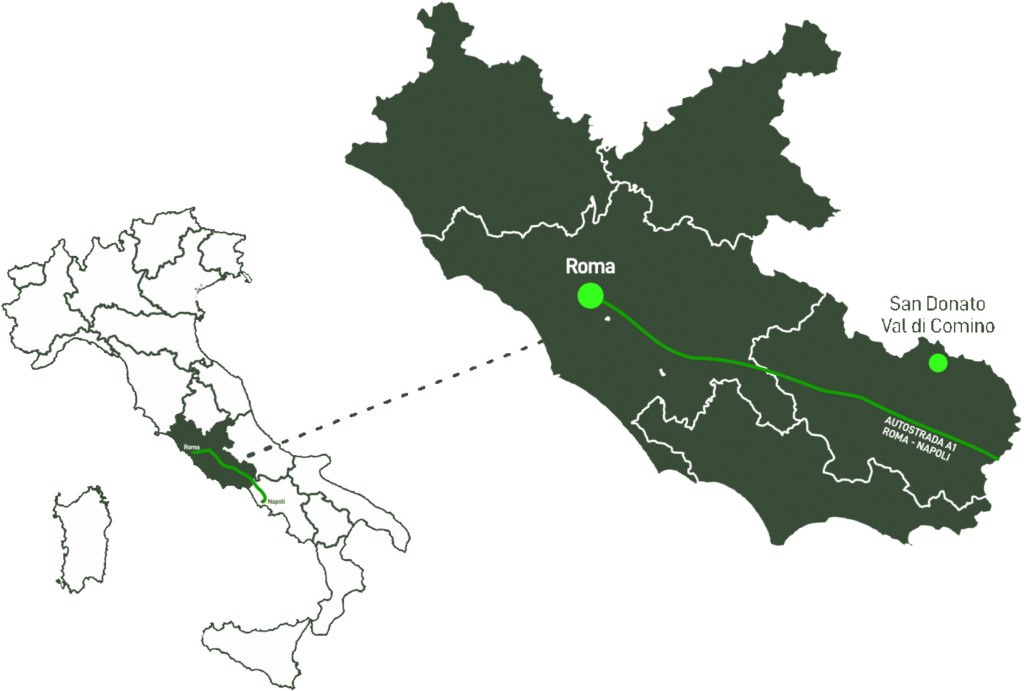
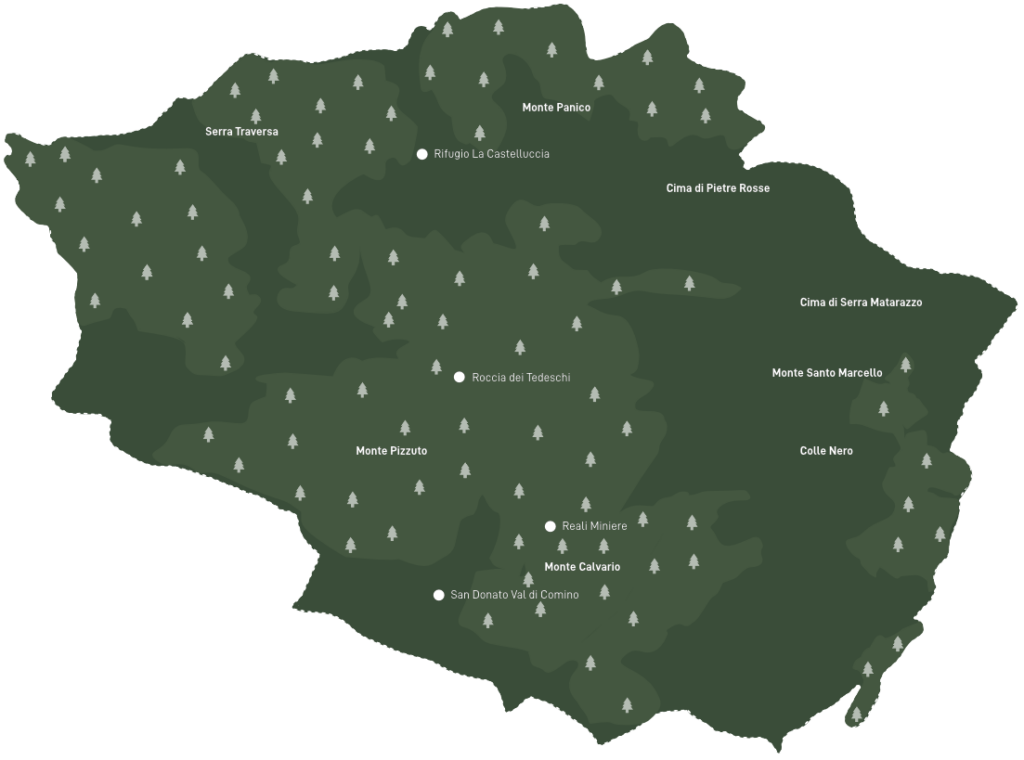
FLORA
AND FAUNA
The Forca d’Acero area is dominated by extensive beech forests, which represent the main vegetal horizon of the area. At lower altitudes, between 800 and 1,200 meters, oak forests prevail, especially Turkey oaks, mixed with maples, hornbeams and wild apple trees.
As for fauna, the area hosts emblematic species of the central Apennines. Among these, the Marsican brown bear and the Apennine wolf are the undisputed protagonists, symbols of a wild and protected nature.

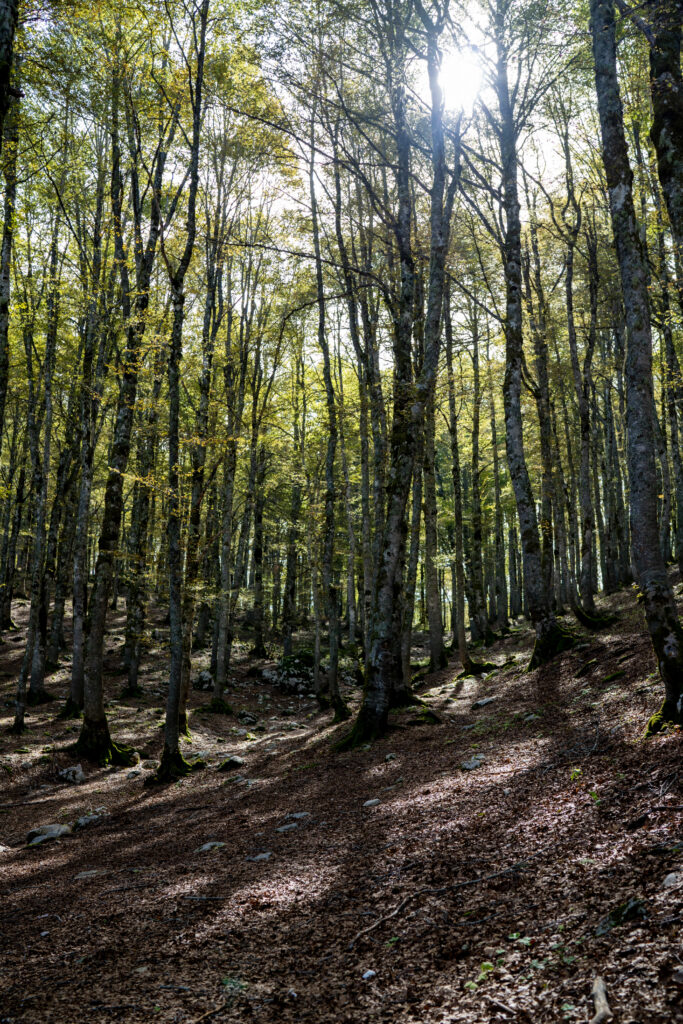

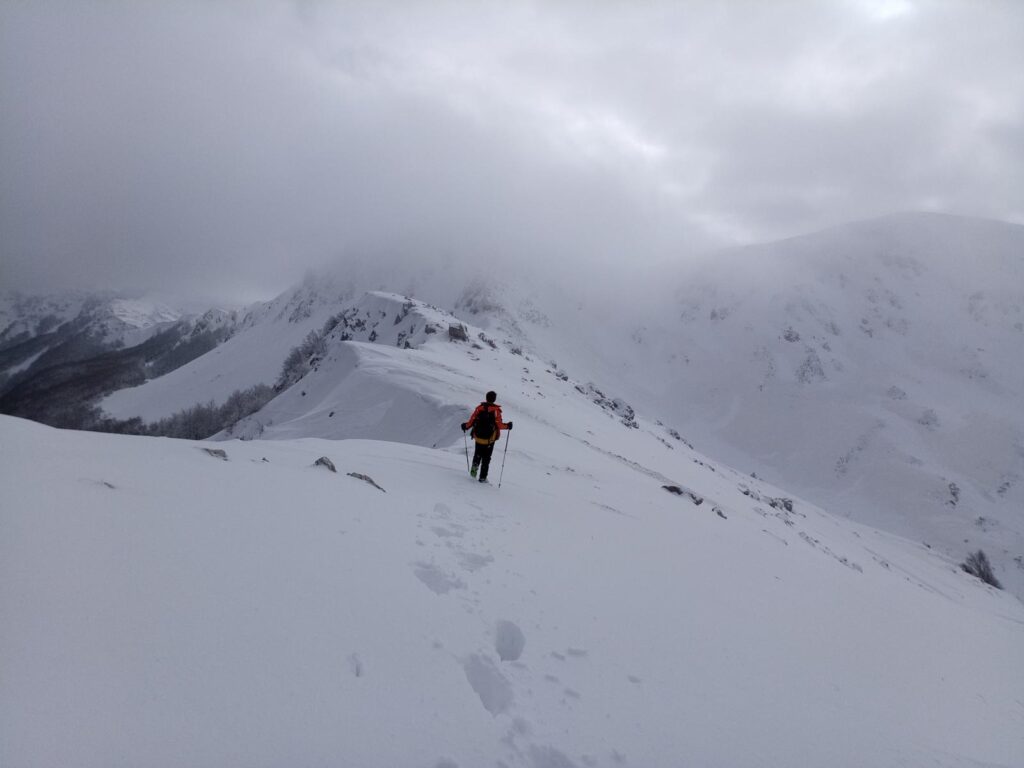
Outdoor
Activities
Forca d’Acero is a paradise for outdoor enthusiasts. The numerous hiking trails allow you to explore the National Park, admiring the local flora and fauna. Among the activities available:
Trekking: Trails of varying difficulty cross woods and clearings, offering panoramic views and the possibility of spotting wild animals.
Mountain Bike: Dedicated trails allow you to explore the area on two wheels, crossing diverse landscapes.
Paragliding and Hang Gliding: The thermals in the area make Forca d’Acero ideal for free flight, offering unique emotions and spectacular views.
Ski Excursion and Snowshoeing: During the winter, heavy snowfall transforms the area into an ideal place for ski excursions and snowshoe walks, allowing you to immerse yourself in snowy landscapes of rare beauty.
Furthermore, the proximity to historic villages such as San Donato Val di Comino offers the opportunity to enrich the experience with cultural visits and food and wine tastings typical of the local tradition.
POINTS
OF INTEREST
- Forca d’Acero beech forest: This majestic beech forest offers suggestive paths, ideal for excursions and walks immersed in nature. During autumn, the foliage offers breathtaking views with a palette of warm colors.
- Grotta dei Briganti: Located along one of the area's trails, this historic cave served as a refuge for bandits in the 19th century. A visit offers a glimpse into the past and a perspective on local history.
- Macchiarvana: A short but fascinating route that passes through beech woods and leads to the Macchiarvana clearing. Suitable for families and those who want a quiet walk in nature.
- Serra Traversa: From the Forca d’Acero road, you can take an excursion to Serra Traversa. From the summit, at 1,865 meters, you can enjoy a breathtaking view that includes the mountains of the Park, the highest peaks of Abruzzo and the Comino Valley.
Valle Fredda Ring: This ring route starts from the Rifugio del Lupo, located on the provincial road at the Forca d’Acero pass. The itinerary crosses the Valle Fredda beech forest, offering an immersive experience in uncontaminated nature.
Serra delle Gravare: An excursion that starts near Forca d’Acero and crosses the Inguagnera Valley, leading to the crest of the Serra delle Gravare. From here, you can admire spectacular views of the Val Fondillo and the surrounding beech forests.
Roccia dei Tedeschi: It is a military post dug into the rock during the Second World War, used to monitor movements in the valley floor.
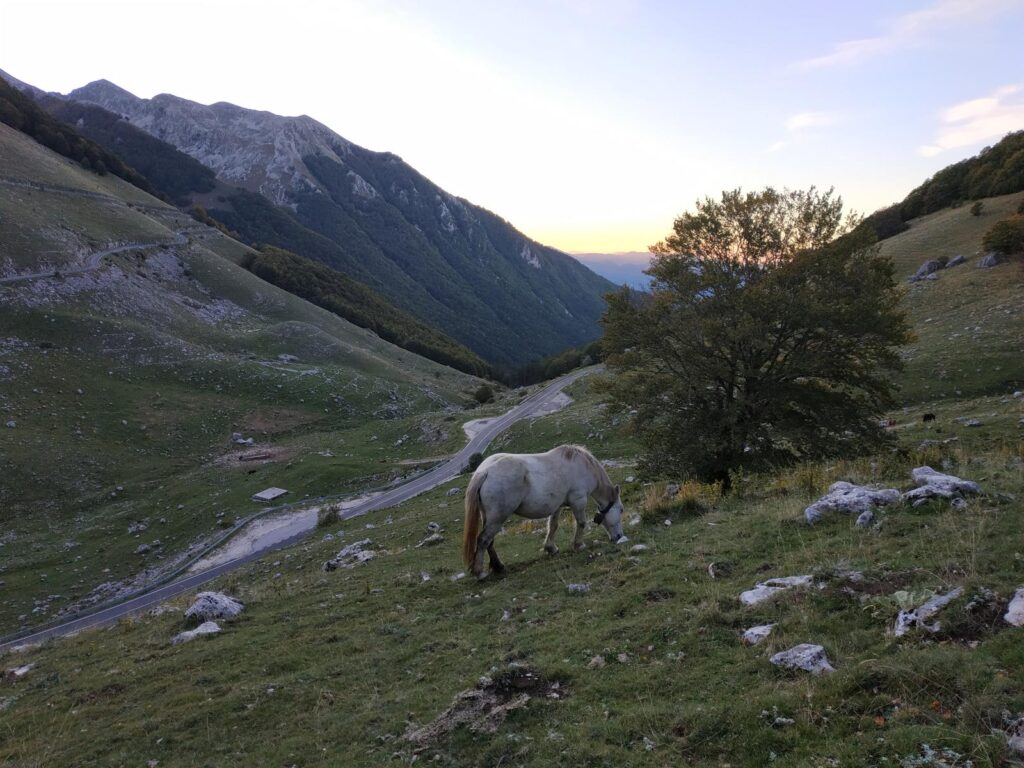

CURIOSITIES
about Forca d'Acero
Forca d’Acero is a place rich in history and charm, not only for its geographical position and its naturalistic value, but also for a series of curiosities that make it unique in the panorama of the central Apennines.
1. Origin of the name
The name “Forca d’Acero” derives from its particular geomorphological conformation: the term Forca refers to the typical mountain pass nestled between two reliefs, while Acero is due to the presence of numerous specimens of this tree species, in particular the Acer pseudoplatanus, which grows lushly along the slopes of the pass.
2. A historical border between two states
Before the Unification of Italy, Forca d’Acero was an important border point between the Papal States and the Kingdom of Naples. Over the centuries, this mountain pass was frequented by shepherds, bandits, wayfarers and traders who travelled along the ancient route connecting Abruzzo and Lazio. Even today, it is possible to find traces of the history of this pass in the ruins of ancient farmhouses and in the old transhumance routes used by shepherds to move their flocks.
3. A strategic point in the Second World War
During the Second World War, Forca d’Acero was an important theater of clashes and strategic operations. Being a fundamental access route between the Apennine mountains, the area was used both by retreating German troops and by Italian partisans to organize sabotage operations. Even today, exploring the area, you can find remains of military posts and trenches.
4. The foliage phenomenon: the “most colourful street in Italy”
Forca d’Acero is famous for its incredible autumn foliage, so much so that the road that crosses it has been defined as one of the most colorful and evocative in Italy. During the months of October and November, the leaves of beech and maple trees are tinged with bright shades of red, orange and yellow, creating a spectacular natural tunnel that attracts photographers and nature lovers from all over Italy.
5. The coldest point in Lazio region
Thanks to its altitude and particular geographical conformation, Forca d’Acero often records temperatures among the lowest in the whole of Lazio. In winter, the thermometer can drop well below zero, with heavy snowfalls that make the area perfect for ski touring and snowshoeing.
6. A paradise for the night sky
Being far from sources of light pollution, Forca d’Acero is one of the best areas for stargazing. On some particularly clear nights, it is possible to see the Milky Way with the naked eye, making it an ideal place for amateur astronomers and sky photographers.
Forca d’Acero is not just a crossing point between two regions, but a place full of history, traditions and natural beauty that deserves to be discovered in every season of the year.